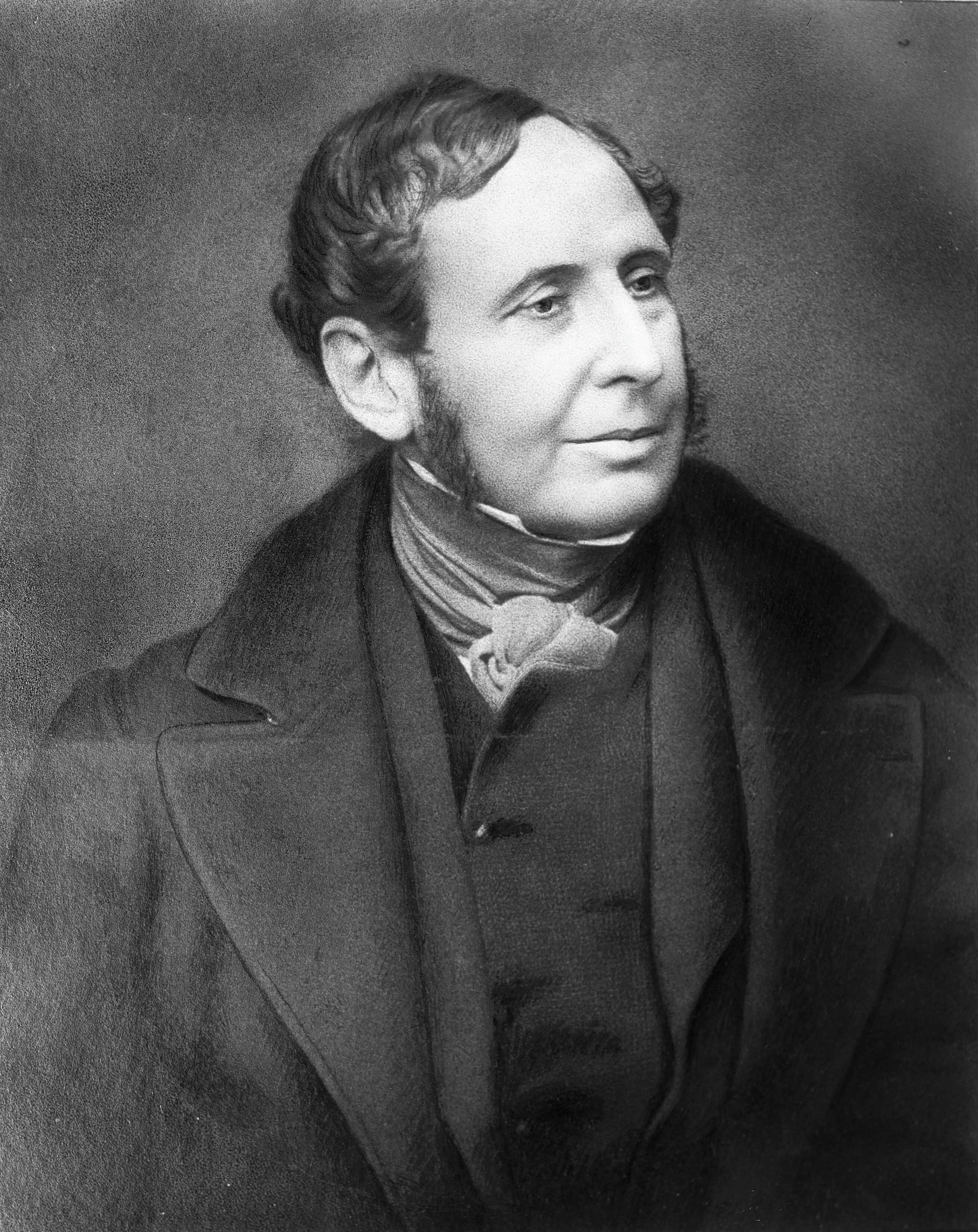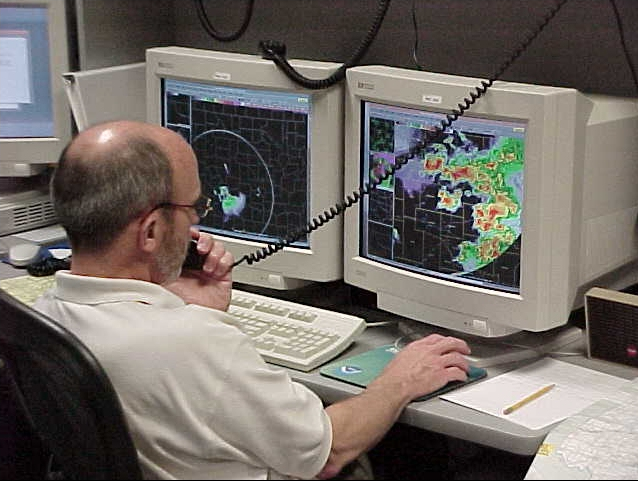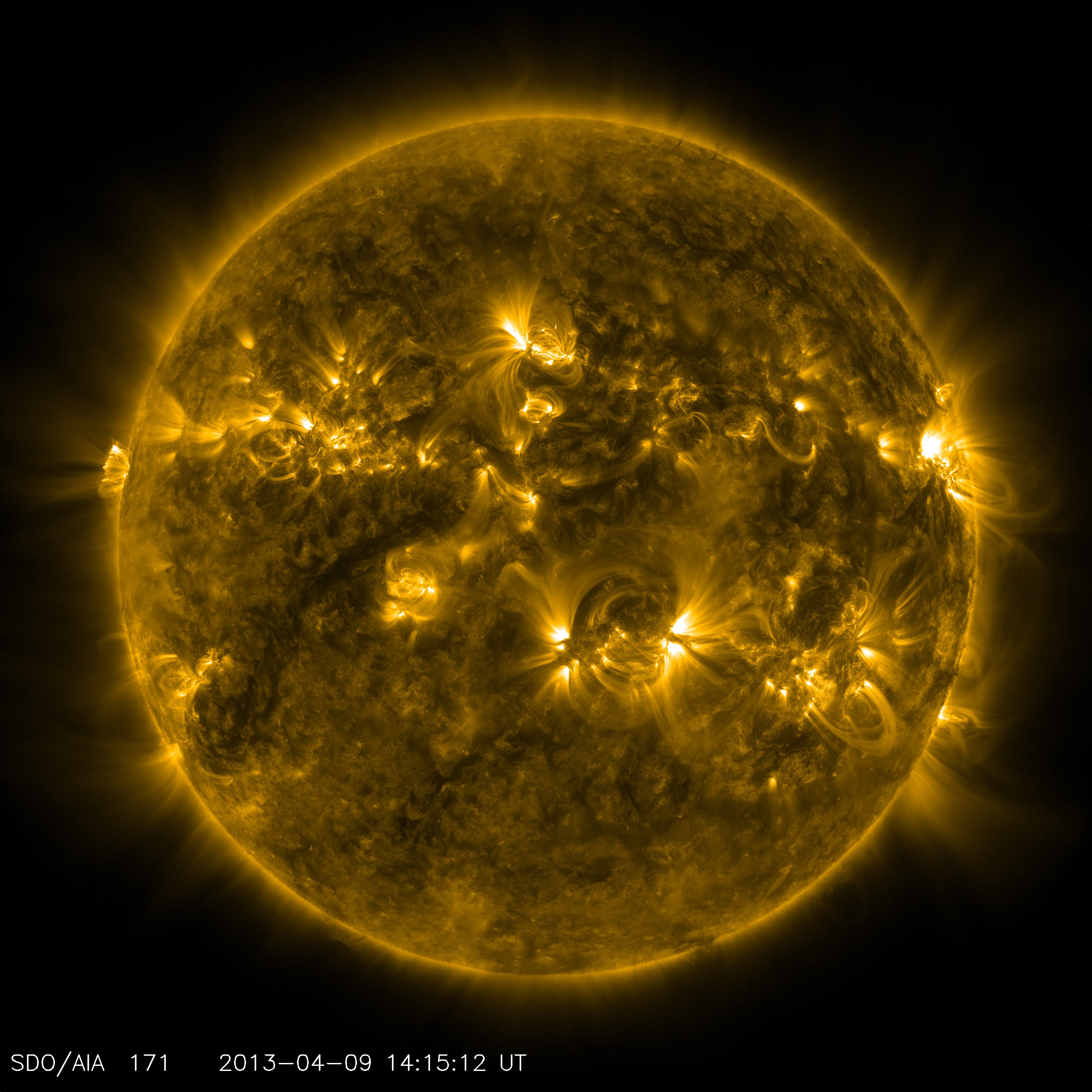|
Hydrodynamical Helicity
In fluid dynamics, helicity is, under appropriate conditions, an Invariant (mathematics), invariant of the Euler equations (fluid dynamics), Euler equations of fluid flow, having a topological interpretation as a measure of Link (knot theory), linkage and/or knot (mathematics), knottedness of Vortex, vortex lines in the flow. This was first proved by Jean-Jacques Moreau in 1961 and Keith Moffatt, Moffatt derived it in 1969 without the knowledge of Jean-Jacques Moreau, Moreau's paper. This helicity invariant is an extension of Woltjer's theorem for magnetic helicity. Let \mathbf(x,t) be the velocity field and \nabla\times\mathbf the corresponding vorticity field. Under the following three conditions, the vortex lines are transported with (or 'frozen in') the flow: (i) the fluid is inviscid flow, inviscid; (ii) either the flow is Incompressible flow, incompressible (\nabla\cdot\mathbf = 0), or it is compressible with a Barotropic fluid, barotropic relation p = p(\rho) between pressu ... [...More Info...] [...Related Items...] OR: [Wikipedia] [Google] [Baidu] |
Fluid Dynamics
In physics, physical chemistry and engineering, fluid dynamics is a subdiscipline of fluid mechanics that describes the flow of fluids – liquids and gases. It has several subdisciplines, including (the study of air and other gases in motion) and (the study of water and other liquids in motion). Fluid dynamics has a wide range of applications, including calculating forces and moment (physics), moments on aircraft, determining the mass flow rate of petroleum through pipeline transport, pipelines, weather forecasting, predicting weather patterns, understanding nebulae in interstellar space, understanding large scale Geophysical fluid dynamics, geophysical flows involving oceans/atmosphere and Nuclear weapon design, modelling fission weapon detonation. Fluid dynamics offers a systematic structure—which underlies these practical disciplines—that embraces empirical and semi-empirical laws derived from flow measurement and used to solve practical problems. The solution to a fl ... [...More Info...] [...Related Items...] OR: [Wikipedia] [Google] [Baidu] |
Chirality
Chirality () is a property of asymmetry important in several branches of science. The word ''chirality'' is derived from the Greek (''kheir''), "hand", a familiar chiral object. An object or a system is ''chiral'' if it is distinguishable from its mirror image; that is, it cannot be superposed (not to be confused with superimposed) onto it. Conversely, a mirror image of an ''achiral'' object, such as a sphere, cannot be distinguished from the object. A chiral object and its mirror image are called '' enantiomorphs'' (Greek, "opposite forms") or, when referring to molecules, ''enantiomers''. A non-chiral object is called ''achiral'' (sometimes also ''amphichiral'') and can be superposed on its mirror image. The term was first used by Lord Kelvin in 1893 in the second Robert Boyle Lecture at the Oxford University Junior Scientific Club which was published in 1894: Human hands are perhaps the most recognized example of chirality. The left hand is a non-superposable mirror ... [...More Info...] [...Related Items...] OR: [Wikipedia] [Google] [Baidu] |
UKMET
The Met Office, until November 2000 officially the Meteorological Office, is the United Kingdom's national weather and climate service. It is an executive agency and trading fund of the Department for Science, Innovation and Technology and is led by CEO Penelope Endersby, who took on the role as Chief Executive in December 2018 and is the first woman to do so. The Met Office makes meteorological predictions across all timescales from weather forecasts to climate change. Although an executive agency of the UK Government, the Met Office supports the Scottish Government, Welsh Government and Northern Ireland Executive in their functions and preparations ahead of intense weather and planning for extreme weather alerts. Met Office policies can be used by each government to inform their planning and decision making processes. The Met Office has an office located in the Scottish capital, Edinburgh, and a forecasting centre in Aberdeen in the north–east of Scotland, which are so ... [...More Info...] [...Related Items...] OR: [Wikipedia] [Google] [Baidu] |
Meteorologist
A meteorologist is a scientist who studies and works in the field of meteorology aiming to understand or predict Earth's atmosphere of Earth, atmospheric phenomena including the weather. Those who study meteorological phenomena are meteorologists in research, while those using mathematical models and knowledge to prepare daily weather forecasts are called ''weather forecasters'' or ''operational meteorologists''. Meteorologists work in Government agency, government agencies, private consulting and research services, industrial enterprises, utilities, radio and television stations, and in education. They are not to be confused with weather presenters, who present the weather forecast in the media and range in training from journalists having just minimal training in meteorology to full-fledged meteorologists. Description Meteorologists study the Earth's atmosphere and its interactions with the Earth's surface, the oceans and the biosphere. Their knowledge of applied mathematics and ... [...More Info...] [...Related Items...] OR: [Wikipedia] [Google] [Baidu] |
Meteorology
Meteorology is the scientific study of the Earth's atmosphere and short-term atmospheric phenomena (i.e. weather), with a focus on weather forecasting. It has applications in the military, aviation, energy production, transport, agriculture, construction, weather warnings and disaster management. Along with climatology, atmospheric physics and atmospheric chemistry, meteorology forms the broader field of the atmospheric sciences. The interactions between Earth's atmosphere and its oceans (notably El Niño and La Niña) are studied in the interdisciplinary field of hydrometeorology. Other interdisciplinary areas include biometeorology, space weather and planetary meteorology. Marine weather forecasting relates meteorology to maritime and coastal safety, based on atmospheric interactions with large bodies of water. Meteorologists study meteorological phenomena driven by solar radiation, Earth's rotation, ocean currents and other factors. These include everyday ... [...More Info...] [...Related Items...] OR: [Wikipedia] [Google] [Baidu] |
Magnetohydrodynamics
In physics and engineering, magnetohydrodynamics (MHD; also called magneto-fluid dynamics or hydromagnetics) is a model of electrically conducting fluids that treats all interpenetrating particle species together as a single Continuum mechanics, continuous medium. It is primarily concerned with the low-frequency, large-scale, magnetic behavior in Plasma (physics), plasmas and liquid metals and has applications in multiple fields including space physics, geophysics, astrophysics, and engineering. The word ''magnetohydrodynamics'' is derived from ' meaning magnetic field, ' meaning water, and ' meaning movement. The field of MHD was initiated by Hannes Alfvén, for which he received the Nobel Prize in Physics in 1970. History The MHD description of electrically conducting fluids was first developed by Hannes Alfvén in a 1942 paper published in Nature (journal), ''Nature'' titled "Existence of Electromagnetic–Hydrodynamic Waves" which outlined his discovery ... [...More Info...] [...Related Items...] OR: [Wikipedia] [Google] [Baidu] |
Topological Fluid Dynamics
Topological ideas are relevant to fluid dynamics (including magnetohydrodynamics) at the kinematic level, since any fluid flow involves continuous deformation of any transported scalar or vector field. Problems of stirring and mixing are particularly susceptible to topological techniques. Thus, for example, the Thurston–Nielsen classification has been fruitfully applied to the problem of stirring in two-dimensions by any number of stirrers following a time-periodic 'stirring protocol' (Boyland, Aref & Stremler 2000). Other studies are concerned with flows having chaotic particle paths, and associated exponential rates of mixing (Ottino 1989). At the dynamic level, the fact that vortex lines are transported by any flow governed by the classical Euler equations implies conservation of any vortical structure within the flow. Such structures are characterised at least in part by the helicity of certain sub-regions of the flow field, a topological invariant of the equations. Helicity ... [...More Info...] [...Related Items...] OR: [Wikipedia] [Google] [Baidu] |
Twist (differential Geometry)
In differential geometry, the twist of a ''ribbon'' is its rate of axial rotation. Let a ribbon (X,U) be composed of a space curve, X=X(s), where s is the arc length of X, and U=U(s) a unit normal vector, perpendicular at each point to (s). Since the ribbon (X,U) has edges X and X'=X+\varepsilon U, the twist (or ''total twist number'') Tw measures the average winding of the edge curve X' around and along the axial curve X. According to Love (1944) twist is defined by : Tw = \dfrac \int \left( U \times \dfrac \right) \cdot \dfrac ds \; , where dX/ds is the unit tangent vector to X. The total twist number Tw can be decomposed (Moffatt & Ricca 1992) into ''normalized total torsion'' T \in Torsion of a curve">torsion of the space curve X, and \left[ \Theta \rightX denotes the total rotation angle of U along X. Neither N nor Tw are independent of the ribbon field U. Instead, only the normalized torsion T is an invariant of the curve X (Banchoff & White 1975). When the ribbon is de ... [...More Info...] [...Related Items...] OR: [Wikipedia] [Google] [Baidu] |
Writhe
In knot theory, there are several competing notions of the quantity writhe, or \operatorname. In one sense, it is purely a property of an oriented link (knot theory), link diagram and assumes integer values. In another sense, it is a quantity that describes the amount of "coiling" of a knot (mathematics), mathematical knot (or any curve, closed simple curve) in three-dimensional space and assumes real numbers as values. In both cases, writhe is a geometric quantity, meaning that while deforming a curve (or diagram) in such a way that does not change its topology, one may still change its writhe. Writhe of link diagrams In knot theory, the writhe is a property of an oriented link (knot theory), link diagram. The writhe is the total number of positive crossings minus the total number of negative crossings. A direction is assigned to the link at a point in each component and this direction is followed all the way around each component. For each crossing one comes across while travel ... [...More Info...] [...Related Items...] OR: [Wikipedia] [Google] [Baidu] |
Renzo L
Renzo, the diminutive of Lorenzo, is an Italian masculine given name and a surname. Given name Notable people named Renzo include the following: * Renzo Alverà (1933–2005), Italian bobsledder *Renzo Arbore (born 1937), Italian TV host, showman, singer, musician, film actor, and film director *Renzo Barbieri (1940–2007), Italian author and editor of Italian comics *Renzo Caldara (born 1943), Italian bobsledder *Renzo Cesana (1907–1970), Italian-American actor, writer, composer, and songwriter * Renzo Cramerotti (born 1947), Italian male javelin thrower * Renzo Dalmazzo (1886–?), Italian lieutenant general *Renzo De Felice (1929–1996), Italian historian *Renzo De Vecchi (1894–1967), Italian football player and coach * Renzo "Larry" Di Ianni (born 1948), Italian-Canadian politician * Renzo Fenci (1914–1999), Italian-American sculptor based in Southern California. *Renzo Furlan (born 1970), Italian tennis player * Renzo Gobbo (born 1961), Italian association foot ... [...More Info...] [...Related Items...] OR: [Wikipedia] [Google] [Baidu] |
Linking Number
In mathematics, the linking number is a numerical invariant that describes the linking of two closed curves in three-dimensional space. Intuitively, the linking number represents the number of times that each curve winds around the other. In Euclidean space, the linking number is always an integer, but may be positive or negative depending on the orientation of the two curves (this is not true for curves in most 3-manifolds, where linking numbers can also be fractions or just not exist at all). The linking number was introduced by Gauss in the form of the linking integral. It is an important object of study in knot theory, algebraic topology, and differential geometry, and has numerous applications in mathematics and science, including quantum mechanics, electromagnetism, and the study of DNA supercoiling. Definition Any two closed curves in space, if allowed to pass through themselves but not each other, can be moved into exactly one of the following standard positions. T ... [...More Info...] [...Related Items...] OR: [Wikipedia] [Google] [Baidu] |
Circulation (physics)
In physics, circulation is the line integral of a vector field around a closed curve embedded in the field. In fluid dynamics, the field is the fluid velocity field. In electrodynamics, it can be the electric or the magnetic field. In aerodynamics, it finds applications in the calculation of lift, for which circulation was first used independently by Frederick Lanchester, Ludwig Prandtl, Martin Kutta and Nikolay Zhukovsky. It is usually denoted (uppercase gamma). Definition and properties If is a vector field and is a vector representing the differential length of a small element of a defined curve, the contribution of that differential length to circulation is : \mathrm\Gamma = \mathbf \cdot \mathrm\mathbf = \left, \mathbf\ \left, \mathrm\mathbf\ \cos \theta. Here, is the angle between the vectors and . The circulation of a vector field around a closed curve is the line integral: \Gamma = \oint_\mathbf \cdot \mathrm d \mathbf. In a conservative vector field ... [...More Info...] [...Related Items...] OR: [Wikipedia] [Google] [Baidu] |




